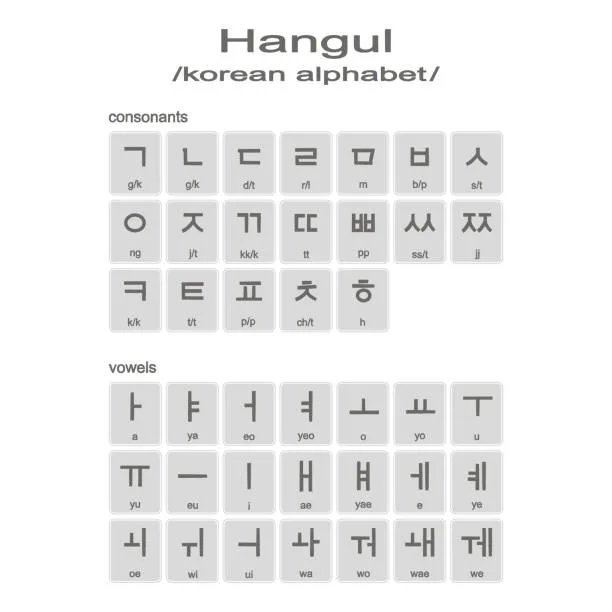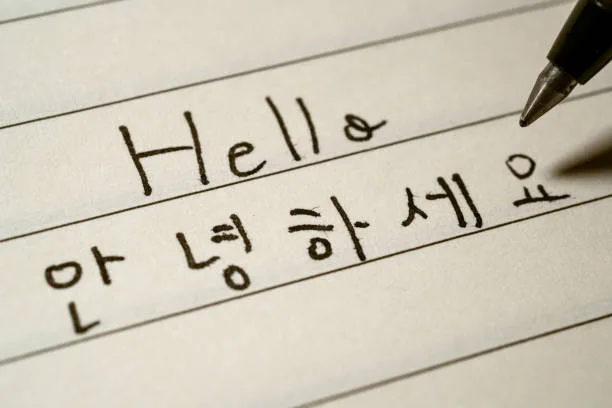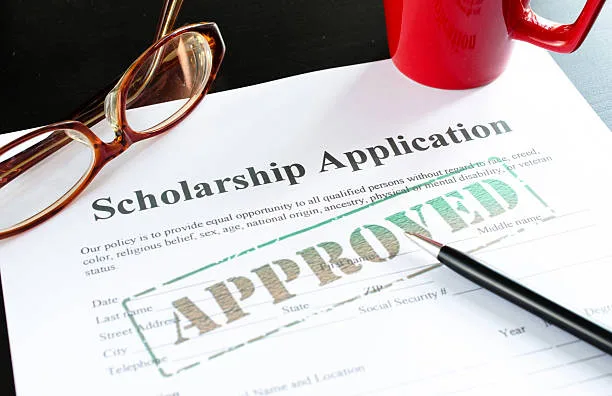Hangul: Your Ultimate Guide to Mastering the Korean Alphabet
Introduction
Aspiring to learn Korean can be an exciting and rewarding journey, and one of the essential first steps is familiarizing yourself with Hangul, the Korean alphabet. Hangul is not only a writing system but also a window into the rich cultural heritage of Korea. Mastering Hangul will pave the way for a deeper understanding of the language and enable you to communicate effectively with native speakers. In this comprehensive guide, we will walk you through the process of preparing for Hangul, equipping you with the knowledge and resources necessary to embark on your Korean language adventure.
Table of Contents
Unveiling the History and Structure of Hangul
Before diving into learning Hangul, it’s crucial to grasp its historical and structural background. Developed by King Sejong the Great in the 15th century, Hangul was designed to be easily learned and accessible to the Korean people. It consists of 14 basic consonants and 10 basic vowels, along with a combination of these characters to form syllables. Understanding this foundation will provide you with a solid framework for studying Hangul.

II. Lay the Foundation: Learning the Consonants and Vowels
To prepare for Hangul, begin by acquainting yourself with the individual consonant and vowel characters. Familiarize yourself with their pronunciation, stroke order, and the associated romanization to bridge the gap between the Korean script and the English alphabet. Practice writing these characters repeatedly to improve your muscle memory.

III. Building Blocks: Syllables and Syllable Blocks
Hangul combines consonants and vowels into syllables, forming the basis of Korean words. Learn the rules governing syllable formation, including the initial consonant, vowel, and final consonant placement. Recognize the unique structure of syllable blocks and their importance in reading and writing Korean accurately.
IV. Listening and Pronunciation
Accurate pronunciation is vital for effective communication in Korean. Train your ears by listening to native speakers, watching Korean dramas or movies, and utilizing online resources. Pay close attention to intonation, word stress, and subtle nuances in pronunciation. Practice speaking Korean words and sentences aloud, mimicking native speakers to enhance your pronunciation skills.

V. Expanding Vocabulary and Reading Comprehension
Once you have a solid grasp of Hangul, it’s time to expand your vocabulary. Start with simple words and gradually progress to more complex phrases and sentences. Utilize language learning platforms, textbooks, and online resources that provide Korean vocabulary lists, flashcards, and reading materials. Practice reading Korean texts, focusing on comprehension and context, to reinforce your understanding of the script.

VI. Writing and Penmanship
Developing good penmanship is an essential aspect of learning Hangul. Regular practice will help you improve your writing speed and accuracy. Utilize writing workbooks, tracing exercises, and online resources that provide guided writing practice. Pay attention to stroke order, spacing, and overall consistency to enhance your written communication skills.
Read More Opportunities for Indians in South Korea.
Scholarship
As of my knowledge cutoff in September 2021, there are no specific scholarships exclusively dedicated to learning Hangul. However, there are various scholarship programs available for international students who wish to study in Korea, which can indirectly support your endeavor to learn Hangul and immerse yourself in Korean culture. These scholarships are provided by the Korean government, universities, and other organizations. Here are a few notable scholarship programs you can explore:

- Korean Government Scholarship Program (KGSP): Also known as the Global Korea Scholarship, KGSP offers scholarships to international students for undergraduate, master’s, and doctoral degree programs in Korean universities. This scholarship covers tuition fees, living expenses, round-trip airfare, and language training.
- Korea Foundation Korean Language Training Fellowship: The Korea Foundation offers scholarships to foreign students who wish to enhance their Korean language skills. The program provides full funding for language training at designated Korean language institutes in Korea.
- Korean Universities Scholarships: Many Korean universities offer scholarships specifically for international students. These scholarships may cover tuition fees, accommodation, and living expenses. Examples include the Seoul National University Scholarship, Yonsei University Scholarship, and Korea University Scholarships.
- GKS for Graduate Students by National Institute for International Education (NIIED): This scholarship program is for international students pursuing graduate studies in Korea. It includes full tuition coverage, a monthly stipend, and a round-trip airfare subsidy.
- Korean Cultural Centers: Korean Cultural Centers in various countries offer cultural and language programs, including scholarships or grants to promote Korean language learning and cultural understanding. Check with your local Korean Cultural Center for any available opportunities.
It is important to note that scholarship availability, eligibility criteria, and application processes may change over time. Therefore, I recommend visiting official scholarship websites, and university portals, or contacting Korean embassies and consulates for the most up-to-date information on scholarship opportunities.
Additionally, there are online resources and language exchange programs that can assist you in learning Hangul, such as language learning platforms, mobile applications, and online communities where you can practice with native speakers.
Remember to stay updated with the latest information regarding scholarships and seek guidance from official sources to ensure you have accurate and reliable information about available opportunities. Good luck in your pursuit of learning Hangul and exploring the Korean language and culture!
How to prepare for Korean language scholarship from an Indian perspective.

- Research Scholarship Programs: Begin by researching scholarship programs available for Indian students who wish to study the Korean language. Explore scholarships offered by the Korean government, Korean universities, and other organizations. Check their eligibility criteria, application deadlines, and required documents.
- Language Proficiency: Most scholarship programs require a certain level of Korean language proficiency. Enhance your language skills by enrolling in Korean language courses in your city or through online platforms. Practice reading, writing, speaking, and listening to Korean as much as possible. You can also consider taking proficiency tests such as the Test of Proficiency in Korean (TOPIK) to demonstrate your language abilities.
- Academic Qualifications: Scholarships often have academic requirements. Ensure that you meet the minimum academic qualifications specified by the scholarship program. Maintain a good academic record and gather all necessary documents such as transcripts, certificates, and letters of recommendation.
- Personal Statement and Study Plan: Scholarship applications typically require a personal statement and study plan. Take the time to write a compelling and well-structured essay that highlights your passion for learning Korean, your future goals, and how the scholarship will contribute to your academic and professional growth. Tailor your statement to align with the scholarship program’s objectives and emphasize your commitment to cultural exchange and understanding.
- Research Korean Institutions: Identify Korean universities or language institutes that offer programs relevant to your field of interest. Familiarize yourself with their curriculum, faculty, and research opportunities. Incorporate this information into your study plan and express your interest in specific institutions when applying for scholarships.
- Financial Planning: Consider the financial aspects of studying in Korea. While scholarships may cover tuition fees and living expenses, it is essential to assess additional costs such as accommodation, travel, and personal expenses. Develop a realistic budget and explore options for financial support, such as part-time jobs or additional grants.
- Recommendation Letters: Request recommendation letters from professors or mentors who can attest to your academic abilities, language proficiency, and potential for success. Choose individuals who can provide strong, detailed, and personalized recommendations that align with the scholarship requirements.
- Application Submission and Deadlines: Pay close attention to application deadlines and ensure that you submit your application well in advance. Gather all necessary documents, double-check them for accuracy, and submit your application by the specified deadline. Late or incomplete applications may not be considered.
- Interview Preparation: Some scholarship programs may require an interview as part of the selection process. Prepare for interviews by researching commonly asked questions, practicing your responses, and showcasing your passion for learning the Korean language and immersing yourself in Korean culture.
- Stay Informed: Keep track of any updates or changes in scholarship programs by regularly visiting the official scholarship websites, and university portals, and contacting the respective scholarship authorities or Korean embassies/consulates in India. Stay connected with Korean cultural centers or language exchange programs in India, as they may provide information about scholarship opportunities.
Remember that competition for scholarships can be fierce, so it’s important to put in the effort and present your application in the best possible light. Seek guidance from career counselors, professors, or individuals who have previously received scholarships to enhance your chances of success. Best of luck in your pursuit of a Korean language scholarship!
Certainly! Here are some online resources that can help you in preparing to learn Korean Hangul:
- Talk to Me in Korean (TTMIK): This website offers a range of free Korean language lessons, including lessons specifically focused on Hangul. They provide detailed explanations, audio recordings, and practice exercises. You can access their Hangul lessons at: https://talktomeinkorean.com/category/lessons/hangeul/
- How to Study Korean: This comprehensive online resource offers structured lessons for learning Korean, starting with the basics of Hangul. It provides clear explanations, audio recordings, and quizzes to reinforce your learning. You can access their Hangul lessons at: https://www.howtostudykorean.com/unit0/
- KoreanClass101: This website offers audio and video lessons for learning Korean at various levels. They have specific lessons dedicated to teaching Hangul, covering its pronunciation and writing system. You can access their Hangul lessons at: https://www.koreanclass101.com/lesson-library/reading-hangul-in-60-minutes/
- Memrise: Memrise is a language learning platform that offers interactive courses for various languages, including Korean. They have specific courses focused on learning Hangul, providing vocabulary and reading practice. You can access their Hangul courses at: https://www.memrise.com/courses/english/korean/
- Duolingo: Duolingo is a popular language-learning app that offers Korean courses. It starts with the basics, including Hangul, and gradually progresses to more advanced lessons. You can access the Duolingo app on your mobile device or visit their website: https://www.duolingo.com/course/ko/en/Learn-Korean
- YouTube Channels: There are several YouTube channels dedicated to teaching Hangul and Korean language basics. Some notable channels include “Learn Korean with KoreanClass101.com,” “Talk To Me In Korean,” and “Billy Korean.” These channels provide video lessons, pronunciation tips, and practice exercises.
Conclusion
Learning Hangul is a foundational step in your journey to mastering the Korean language. By understanding the historical context, structure, and pronunciation of Hangul, you can effectively communicate, read, and write in Korean. Take advantage of various resources available, including language learning platforms, textbooks, and online communities to support your learning process. Remember to practice regularly, maintain motivation, and embrace the beauty of Hangul as a gateway to Korean culture. With dedication and perseverance, you will soon find yourself on the path to fluency in this fascinating language.
Embark on your Hangul learning adventure today, and let the world of Korean language and culture unfold before you!

[…] and more. aspirants suffer a competitive selection process grounded on academic achievements, language proficiency, and particular statements. Successful campaigners gain access to quality education in South Korea, […]
I don’t think the title of your article matches the content lol. Just kidding, mainly because I had some doubts after reading the article.
I understand, sometimes titles can be misleading! If you have any doubts or questions after reading the article, feel free to share them with me. I’m here to help clarify any confusion or provide additional information on the topic. Just let me know what specifically you’re unsure about, and I’ll do my best to assist you.